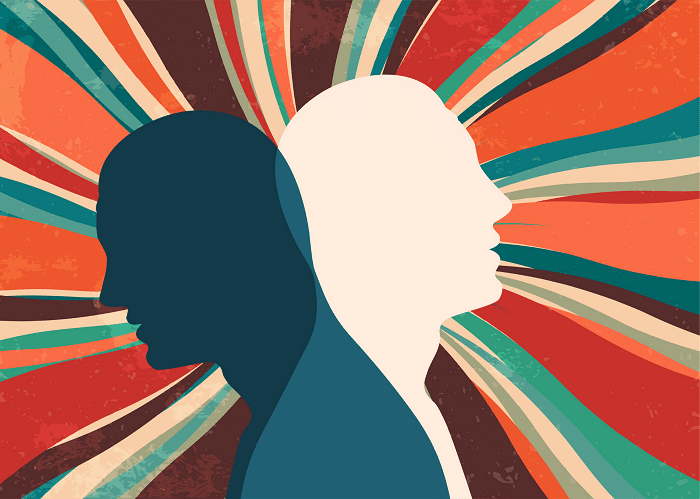“It’s a disease that both kills and gives life. Fire, by its very nature, both creates and destroys. Mania is a strange and driving force—a destroyer—a fire in the blood.” — Dr. Kay Redfield Jamison
Have you heard of bipolar disorder? It’s a mood disorder and, to this day, is still somewhat shrouded in mystery. Yet, it impacts roughly 3% of people in the United States every year alone.
Frequently referred to as manic-depression, bipolar disorder is characterized by prolonged periods of marked “highs” (mania or hypomania) followed by depressive “lows” (depression) and often periods of symptom remission between cycles.
And while stress can trigger an episode of mania or depression, it cannot cause the disorder. Instead, underlying genetics are thought to be key to the condition.
Check out the video below to learn more:
The presence of mania or hypomania distinguishes bipolar disorder from unipolar depression.
Manic Episode
“Restless, fiery, aggressive, visionary, and impatient with the status quo.” — Dr. Kay Redfield Jamison
A manic episode is a period of at least one week when someone is extremely high-spirited or irritable most of the day for most days, possesses more energy than usual, and experiences at least three of the following changes in behavior:
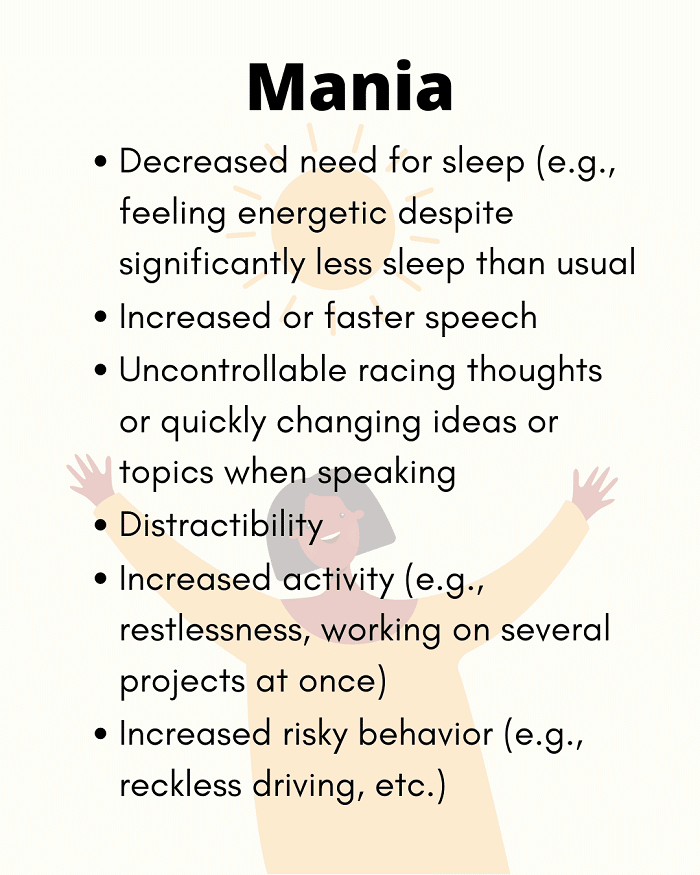
Some people experiencing manic episodes also experience disorganized thinking, false beliefs, and/or hallucinations, known as psychotic features.
Hypomania
A hypomanic episode is characterized by less severe manic symptoms that need last only four days in a row rather than a week. As a result, it doesn’t lead to the significant problems in daily functioning that mania commonly causes.
In fact, hypomania is often associated with increased productivity and other positive characteristics. But left untreated, it can result in full-blown mania, which may become dangerous and require hospitalization or be followed by long bouts of depression.
Major Depressive Episode
“Passive, sensitive, dependent, and with limited aspirations.” — Dr. Kay Redfield Jamison
A major depressive episode is a period of at least two weeks in which a person has at least five of the following symptoms, including at least one of the first two listed:
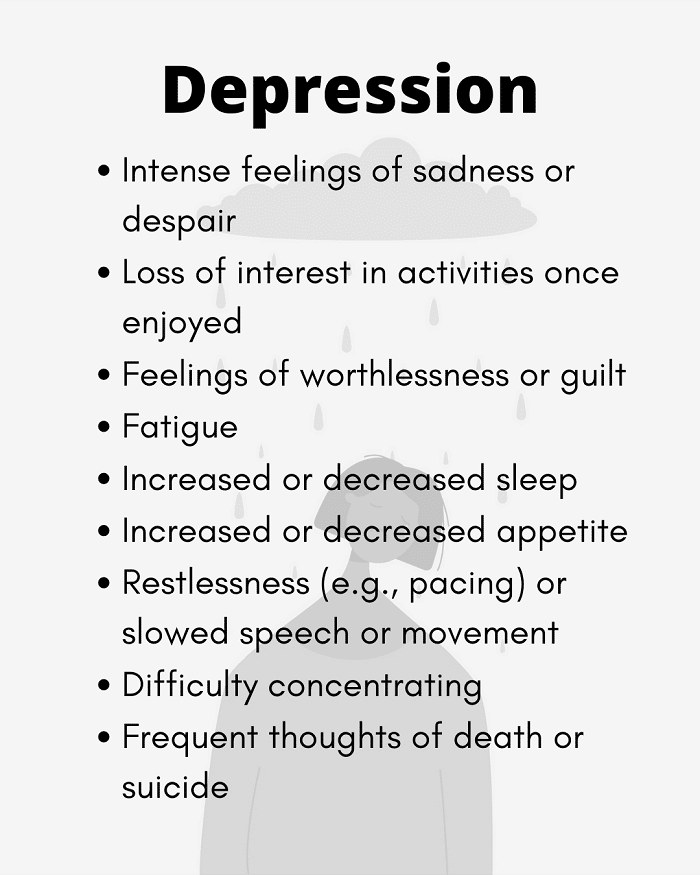
People with bipolar disorder experience a range of symptoms, resulting in different variations of the disease, with the most common diagnoses being bipolar type one and two.
Bipolar 1: Characterized by extreme highs alongside lows (full-blown mania that may require hospitalization).
Bipolar 2: Involves briefer, less extreme periods of elation (hypomania) interspersed with long periods of depression.
Treatment Outcomes
With medication, bipolar disorder is treatable but not cured.
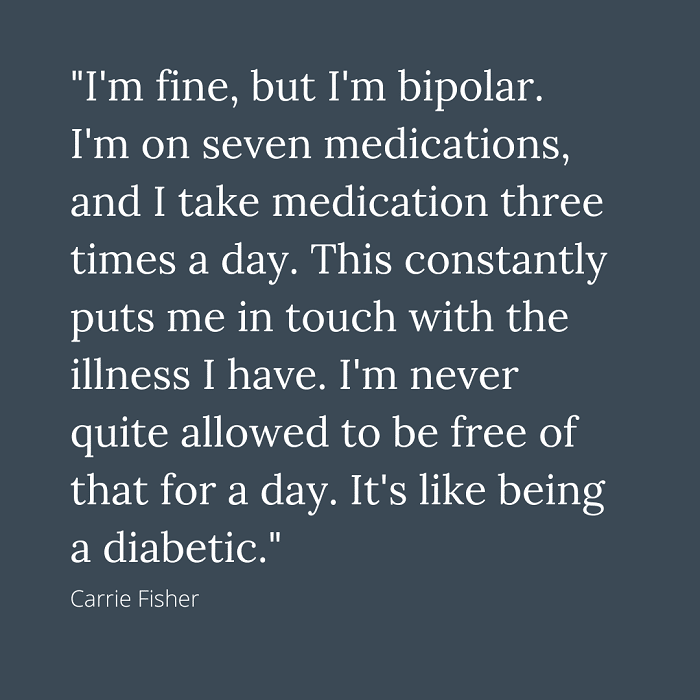
Therapy centered around education on identifying mood episode triggers, and lifestyle adjustments, such as regular exercise, can help those with the illness navigate symptoms. However, neither are a substitute for medication.

That said, many with bipolar disorder thrive—not despite it, but because of it— “contributing a great deal of energy, fire, enthusiasm, and imagination to the people and world around them.”
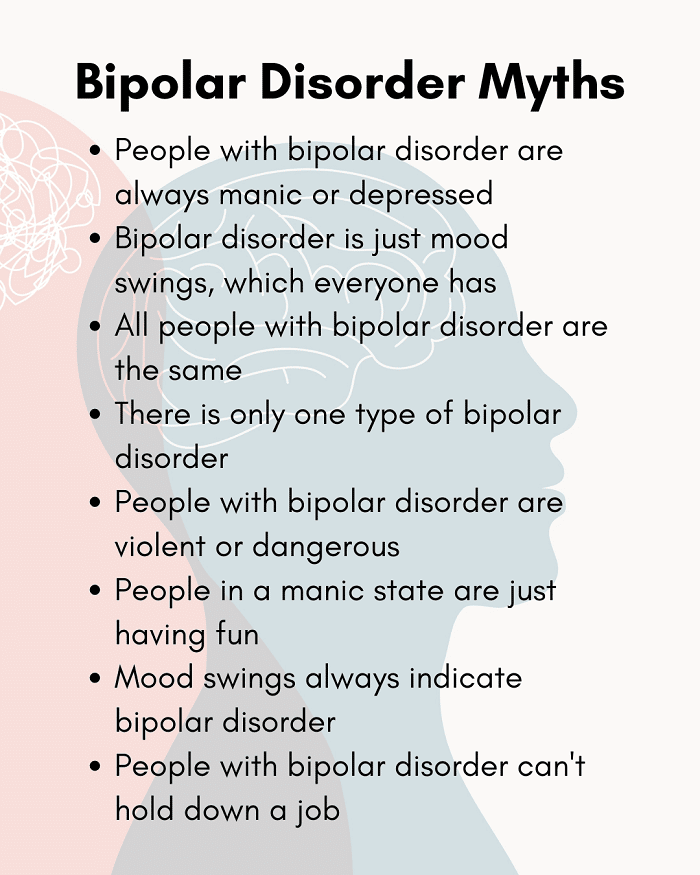
Sadly, the condition is often misdiagnosed and stigmatized—those with it can receive poor, if any, psychiatric treatment and are at high risk for suicide.
Moreover, many refuse medication altogether due to side effects and fear that it will “dim their emotions and destroy creativity.”
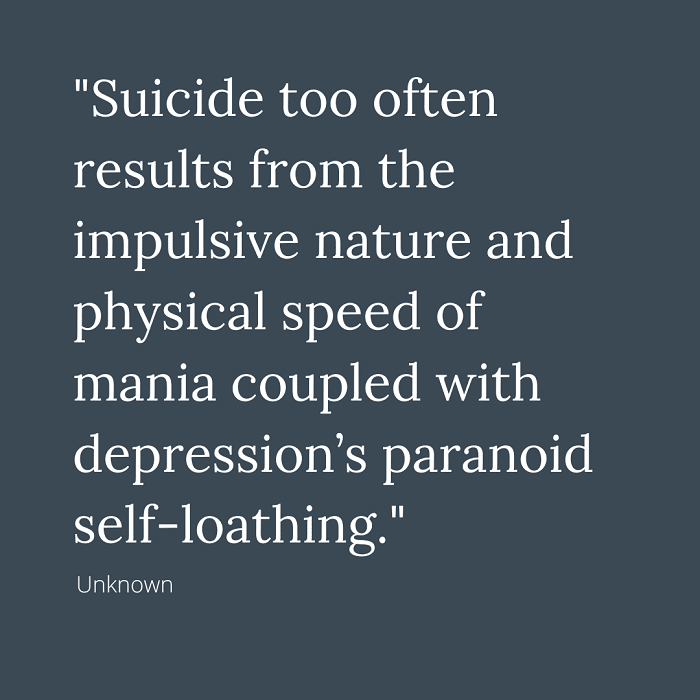
Experiencing mixed episodes—periods marked by symptoms of both mania and depression—put those with bipolar disorder at heightened risk for suicide, with up to 1 in 5 people with the condition ultimately ending their life.
Warning Signs of Suicide
The behaviors listed below may be some of the signs that someone is thinking about suicide.
Talking about:
- Wanting to die
- Great guilt or shame
- Being a burden to others
Feeling:
- Empty, hopeless, trapped, or having no reason to live
- Extremely sad, more anxious, agitated, or full of rage
- Unbearable emotional or physical pain
Changing behavior, such as:
- Making a plan or researching ways to die
- Withdrawing from friends, saying goodbye, giving away important items, or making a will
- Taking dangerous risks such as driving extremely fast
- Displaying extreme mood swings
- Eating or sleeping more or less
- Using drugs or alcohol more often
If these warning signs apply to you or someone you know, get help as soon as possible, particularly if the behavior is new or has increased recently.
National Suicide Prevention Lifeline
Dial 988
Crisis Text Line
Text “HELLO” to 741741
Want More?
For additional information on bipolar disorder, check out the resources below:
Learn More: What You Should Know About Bipolar Disorder — WebMD
Reading Suggestion: An Unquiet Mind by Kay Redfield Jamison
Don’t forget to peruse our blog and follow us on social media. You can find us on LinkedIn at Youth Dynamics of Montana, Instagram at youthdynamicsmt, and Facebook at Youth Dynamics of Montana & People of Youth Dynamics.

